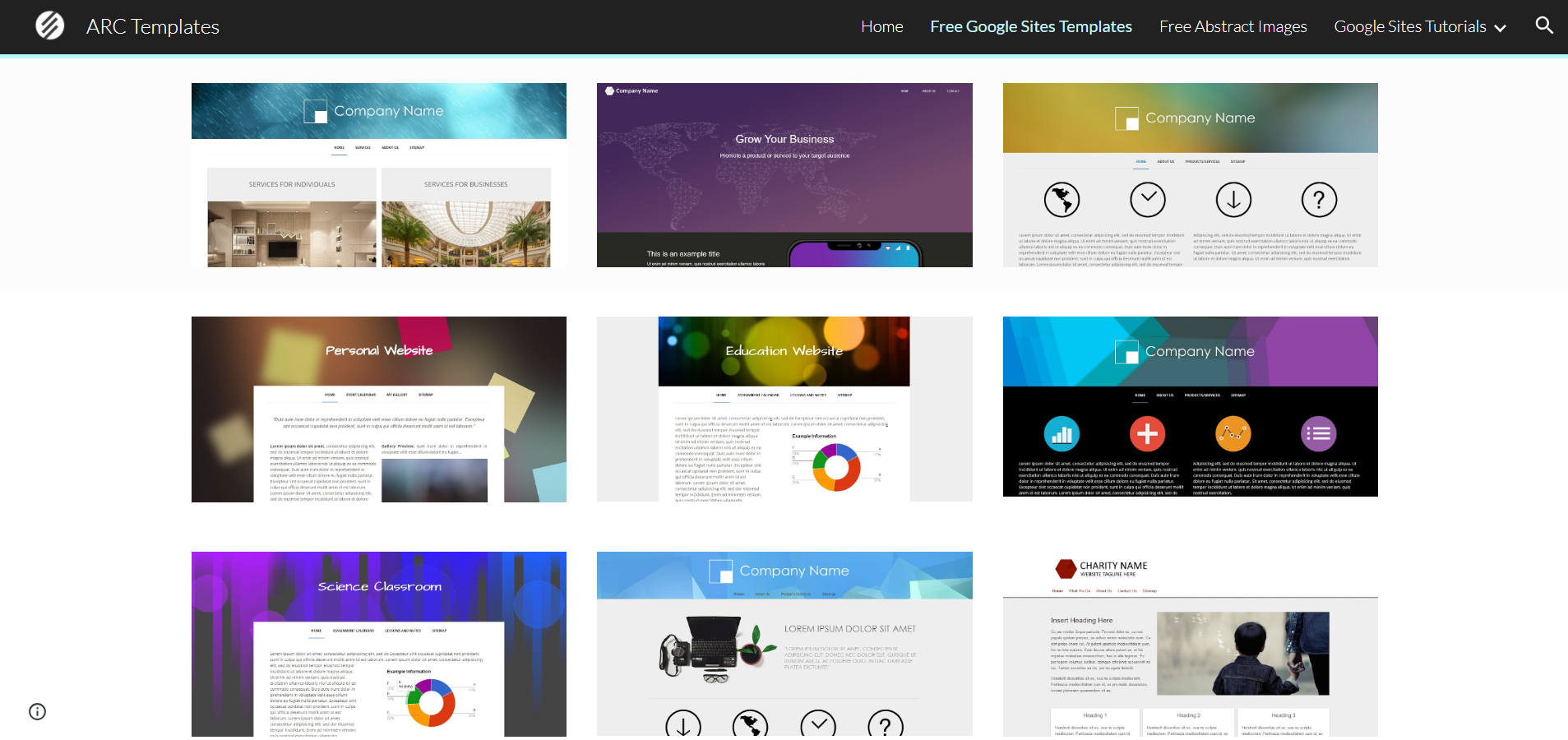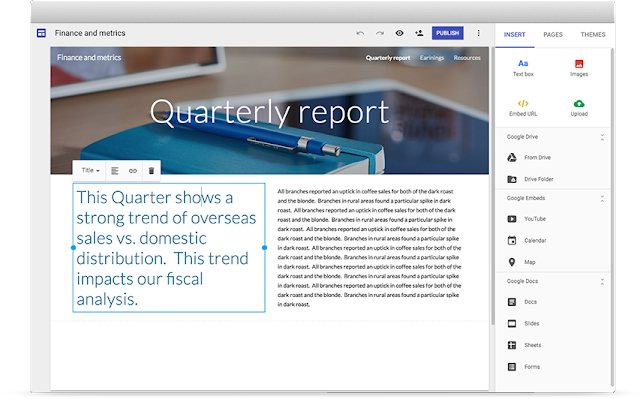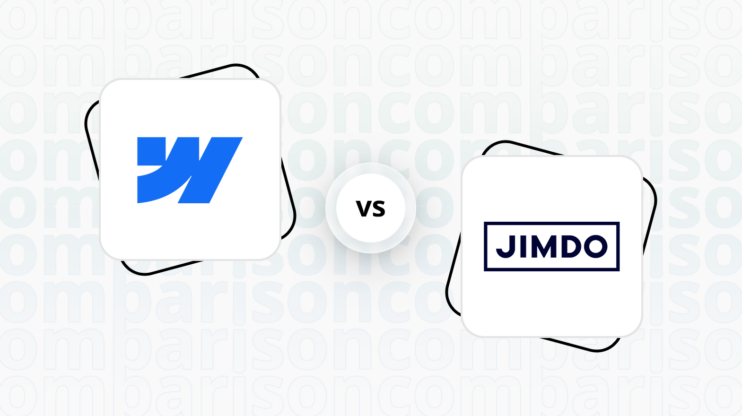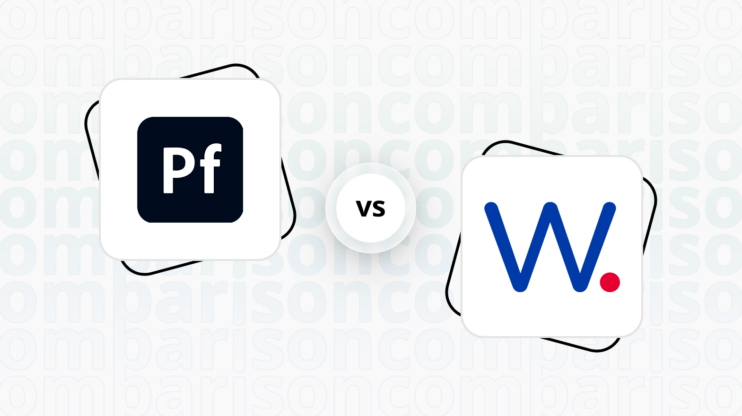Google Sites vs Webnode: Final verdict
Google Sites vs Webnode both offer unique advantages, but they cater to different user needs and preferences.
-
Google Sites (Overall Grade: 5.6/10)
is ideal for users who prioritize ease of use and seamless integration with Google services. It excels in collaborative features, making it a great choice for team projects, personal portfolios, and small business websites. However, it lacks advanced design customization and ecommerce capabilities, which may limit its appeal for users seeking more robust website functionalities. -
Webnode (Overall Grade: 6.5/10)
offers a more comprehensive set of features, including better design functionalities, ecommerce tools, and marketing capabilities. It is well-suited for beginners and small to medium-sized businesses looking to create professional websites quickly and easily. While it may not integrate as seamlessly with other services as Google Sites, its broader range of templates and customization options make it a more versatile choice for various website needs.

|

|
|
|---|---|---|
|
Design functionalities & templates |
4.9 |
7.1 |
|
Ease of use |
8.3 |
8.0 |
|
Ecommerce |
1.8 |
6.3 |
|
Website editors |
7.0 |
7.3 |
|
Product testing options |
6.9 |
5.3 |
|
Price |
8.1 |
7.7 |
|
Hosting quality |
8.2 |
6.3 |
|
Website speed optimization |
3.3 |
6.1 |
|
Plugins/extensions and integrations |
6.4 |
6.8 |
|
Marketing features |
2.6 |
5.5 |
|
Customer support |
7.2 |
5.3 |
|
Website security |
9.3 |
7.7 |
|
AI capabilities |
0 |
5.3 |
|
User management |
7.8 |
6.9 |
Which one is the best for ecommerce: Google Sites or Webnode?
 1.8
1.8
 6.3
6.3
Verdict
: Google Sites is not designed for ecommerce, while Webnode offers a more robust solution for small to medium-sized online stores.
-
Google Sites
: Google Sites is primarily a tool for creating simple websites and lacks built-in ecommerce features. It relies on third-party integrations for any ecommerce functionality, making it less suitable for businesses looking to sell products online. When comparing Google Sites vs Webnode, Google Sites falls short in providing the necessary tools for ecommerce. -
Webnode
: Webnode offers a more comprehensive ecommerce solution with tools for product management, payment processing, and customizable templates. It is a better choice for small to medium-sized online stores, providing a range of features that support online selling effectively.
Which one is the best for informational and business websites?
 7.2
7.2
 7.2
7.2
Verdict
: When it comes to creating informational and business websites, both Google Sites and Webnode offer unique advantages. Google Sites is ideal for users who need seamless integration with Google services and prioritize ease of use, while Webnode excels in design flexibility and customization options.
-
Google Sites
: Google Sites is a structured web page-creation tool that is part of the Google Workspace package. It allows users to build websites easily using a drag-and-drop interface, with the added benefit of integrating various Google services like Google Drive, Maps, and Calendar. This makes it particularly useful for team projects, personal portfolios, and small business websites. Scoring 7.2, Google Sites is user-friendly and designed for collaboration, but it may lack the advanced design customization options found in other builders. -
Webnode
: Webnode is a versatile website builder that enables users to create websites without any coding knowledge. It uses a drag-and-drop interface and offers a variety of customizable templates suitable for different purposes, from business and portfolios to restaurants and travel. Webnode also scores 7.2 and provides a good balance of ease of use and design flexibility, making it a strong contender for beginners who want to create a simple yet professional-looking website quickly and easily.
Google Sites vs Webnode: Detailed comparison
Design functionalities & templates
Design FunctionalitiesRepresents how well each platform allows for creative design and customization of websites.Score Components:
- Template Variety (30%): Range and quality of design templates.
- Customization (30%): Flexibility and options for design alterations.
- User Interface (20%): Ease and intuitiveness of the design process.
- Responsiveness (10%): Adaptability to different devices and screen sizes.
- Innovation (10%): Unique design features and tools.
 4.9
4.9
 7.1
7.1
🏆
Winner: Webnode.
If you’re looking for a platform that offers more creative control and a wider array of design features, Webnode is the preferred choice.
Google Sites offers a limited number of templates (around 17) suitable for various purposes, from personal blogs to business websites. These templates are designed for user engagement, simplicity, and functionality, allowing for customization to meet specific needs. However, compared to other website builders, Google Sites might offer less variety in templates and design customization options.


Webnode offers a variety of website templates designed for different purposes, from business and portfolios to restaurants and travel. These templates are customizable and responsive, ensuring they display well on any device. While an exact number isn’t available, Webnode provides a wide selection to cater to diverse website needs.
Get a head start on website creation with AI
Create a custom website tailored to your business needs 10X faster with 10Web AI Website Builder!
Ease of use
Ease of useReflects the platform’s overall user-friendliness.Score
Components:
- Learning curve (40%): Quickness and ease of getting started.
- Interface design (30%): Simplicity and intuitiveness of layout.
- User guidance (20%): Quality of tutorials and support.
- Flexibility (10%): Adaptability to various user skills.
 8.3
8.3
 8.0
8.0
🏆 Winner: Google Sites
. Scoring 8.3, Google Sites offers a user-friendly interface with drag-and-drop functionality, making it easy for users to create and publish websites without coding knowledge. Its seamless integration with other Google services enhances its utility, especially for those familiar with the Google ecosystem. Webnode, with a score of 8.0, also provides a straightforward and intuitive platform, but Google Sites edges out slightly in terms of overall ease of use.
Learning Resources
🏆 Winner: Google Sites
. Google Sites provides a wide array of learning resources, including practical guides for educators and comprehensive digital skill development programs. These resources are well-integrated with other Google services, making it easier for users to learn and adapt. Webnode also offers a variety of learning resources, including official documentation and video tutorials, but Google Sites’ extensive and versatile resources give it the advantage.
For ecommerce
EcommerceMeasures the platform’s effectiveness in supporting online business activities.Score Components:
- Ecommerce themes and templates (20%): Variety and design of templates.
- Product management (25%): Ease of managing and organizing products.
- Payment options (25%): Variety and convenience of payment methods.
- Ecommerce features (20%): Features for managing an ecommerce store.
- Integration (10%): Compatibility with external e-commerce tools and services.
 1.8
1.8
 6.3
6.3
Google Sites is not designed for ecommerce and lacks built-in features for setting up an online store. It relies on third-party integrations for any ecommerce functionality, making it less suitable for businesses looking to sell products online. Webnode, on the other hand, offers a more robust ecommerce solution with tools for product management, payment processing, and customizable templates, making it a better choice for small to medium-sized online stores.

|

|
|
|---|---|---|
|
Ecommerce themes and templates |
0.0 |
6.5 |
|
Product page customization |
0.0 |
7.0 |
|
Payment processing and commissions |
1.0 |
6.8 |
|
POS capabilities |
0.0 |
4.0 |
|
Payment gateways |
2.0 |
7.0 |
|
Product numbers |
0.0 |
5.5 |
|
Additional ecommerce features |
0.5 |
6.0 |
Google Sites ecommerce features:
- No built-in ecommerce features
Webnode ecommerce features:
- Shipping options
- Payment gateway integrations
- Order management
- Coupons and discounts
Ecommerce themes & templates
Google Sites does not offer any ecommerce-specific templates. In contrast, Webnode provides ecommerce-specific templates designed for creating online stores. These templates typically come with features such as product showcasing, shopping cart functionality, support for various payment gateways, and customization options. However, users should be mindful of potential limitations such as customization restrictions, feature limitations based on plan tiers, transaction fees, and integration limitations when choosing a template and plan for their ecommerce website on Webnode.
Product page customization
Google Sites lacks any product page customization features, as products can only be listed by embedding third-party platforms. All customization must be done within these external platforms. Webnode, however, provides extensive customization options for product pages, allowing for the creation of visually appealing and informative displays. Features such as customizable content blocks, product images and galleries, tailored product descriptions, customizable call-to-action buttons, product variations, and SEO optimization contribute to a seamless and optimized shopping experience.
Payment processing
Google Sites allows for payment processing through external tools or links, not through native features. This can be done by embedding HTML code for payment buttons from services like PayPal, Square, or Stripe, or by linking to an external checkout page. However, Google Sites doesn’t offer the comprehensive ecommerce capabilities that dedicated platforms provide. Webnode supports various payment gateways, including popular options like PayPal and Stripe, for online transactions. While Webnode itself doesn’t charge commissions on transactions, payment gateways may have their own fee structures. Webnode primarily focuses on facilitating online transactions and doesn’t provide native POS capabilities, although integration with third-party POS solutions may be possible.
Considering the features, availability, cost, and flexibility, Webnode is a more robust and flexible ecommerce solution compared to Google Sites. However, for users who need a simple website with basic ecommerce functionalities, Google Sites with third-party integrations might still be a viable option.
Website Editors
Website EditorsEvaluates the platforms’ website building and editing capabilities.Score Components:
- Customization tools (40%): Range and power of editing features.
- Editor usability (30%): User experience within the editor.
- Design flexibility (20%): Freedom in layout and design changes.
- Update and maintenance ease (10%): Simplicity of updating and maintaining the site.
 7.0
7.0
 7.3
7.3
🏆
Winner: Webnode
. Webnode, with a score of 7.3, offers a user-friendly drag-and-drop interface with customizable templates, enabling users to easily create professional-looking websites without coding skills. The editor provides responsive design capabilities, multilingual support, and built-in features such as SEO tools, e-commerce functionality, and analytics integration, making it a comprehensive solution for individuals and businesses to create and manage their online presence efficiently.
Google Sites, scoring 7.0, offers a user-friendly website builder editor that allows users to create and design websites without needing coding knowledge. With its drag-and-drop interface, users can easily add, customize, and arrange elements such as text, images, and videos on their web pages. It also provides a variety of templates and design options to help users get started quickly and ensure their site looks professional. However, its simplicity comes with limitations, such as a lack of advanced design customization options and limited third-party integrations.

Mobile editor/app
 0
0
 5.5
5.5

🏆
Winner: Webnode
. Both Google Sites and Webnode have limited mobile editing capabilities. Google Sites does not offer a mobile editor app, which means users cannot make on-the-go adjustments to their websites using a mobile device. This can be a significant drawback for users who need to manage their site while away from a desktop.
Webnode, on the other hand, allows users to edit their websites using a mobile browser version of the editor. While this option comes with certain limitations, it still provides more flexibility compared to Google Sites. Users can make basic edits and adjustments to their site layout and content, which can be particularly useful for quick updates or minor changes.
In summary, Webnode receives a higher rating due to its ability to offer some level of mobile editing, even though it is not as robust as a dedicated mobile app. Google Sites, lacking any mobile editing capability, falls short in this aspect.
Product testing options
Product Testing OptionsAssesses the options for trying out platform features before commitment.Score Components:
- Trial quality (40%): Extent and usefulness of the trial or free version.
- Feature accessibility (30%): How many features are available to test.
- Trial duration (20%): Length of the trial period.
- Ease of transition (10%): Smoothness of moving from trial to paid plans.
 6.9
6.9
 5.3
5.3
Overall Result
:
Google Sites wins
. Google Sites scores 6.9, offering a 14-day free trial with the possibility to test some premium features, making it a more flexible option for users wanting to explore the platform’s capabilities. Webnode, with a score of 5.3, provides a free plan with limited features and a 15-day money-back guarantee for paid plans, but lacks a dedicated trial period for premium features.

|

|
|
|---|---|---|
|
Free Plan |
Yes | Yes |
|
Trial Duration |
14 days | No |
|
Testing Premium Features |
Possible within trial period | Some features with free plan |
|
Money-back Guarantee |
No | 15-day money-back guarantee |
Price
PriceLooks at the cost-effectiveness and value for money of each platform.Score Components:
- Plan value (40%): What each pricing tier offers.
- Transparency and clarity (30%): Clearness of pricing structures.
- Flexibility of plans (20%): Range of options to suit different budgets.
- Hidden costs (10%): Additional expenses not included in the plan.
 8.1
8.1
 7.7
7.7
Google Sites offers more affordable and scalable options, especially for businesses, while Webnode provides a range of plans suitable for different website needs, including ecommerce.

|

|
|
|---|---|---|
|
$0-$10 |
Business Starter ($7.20/month): This plan includes basic features suitable for individuals or small businesses, offering professional email through Gmail, 30GB of storage per user, and video meetings for up to 100 participants. It allows to manage 1 website and there is no limitation on number of pages. Value for Price: 6.0 |
LIMITED ($5.50/month): Basic plan, 200 MB storage, attach domain, website statistics, up to 5 form fields, last 30 days backup. This plan allows to manage 1 website with unlimited number of pages. Value for Price: 3.0 |
|
$10-$20 |
No offering at this amount. |
MINI ($10.00/month): All essentials for a simple website, 1 GB storage, 3 GB bandwidth, website statistics, 1 email account. This plan allows to manage 1 website with unlimited number of pages. Value for Price: 4.5 |
|
$20-$30 |
Business Standard ($14.40/month): Suitable for growing businesses, this plan provides 2 TB of storage per user, video meeting capacity for up to 150 participants with recording features, and access to smart booking pages and shared drives. It allows to manage 1 website and there is no limitation on number of pages. Value for Price: 7.5 |
STANDARD ($16.90/month): For starting an online store, 3 GB storage, 10 GB bandwidth, 20 email accounts, basic store features. This plan allows to manage 1 website with unlimited number of pages. Value for Price: 6.0 |
|
$30+ |
Business Plus ($21.60/month): Designed for larger businesses needing more robust capabilities, offering 5 TB of storage per user, advanced security options, and video meetings for up to 500 participants. It allows to manage 1 website and there is no limitation on number of pages. Value for Price: 8.5 |
PROFI ($26.50/month): Professional websites, 7 GB storage, unlimited bandwidth, 100 email accounts, full online store capabilities. This plan allows to manage 1 website with unlimited number of pages. Value for Price: 7.5 |
location. As a result in rare cases the prices displayed here can differ from the ones you see on their
websites.
Hosting quality
Hosting
qualityExamines the reliability and performance of the hosting solutions.Score Components:
- Uptime (40%): Consistency and reliability of website availability.
- Speed (30%): Loading times and performance.
- Bandwidth and storage (20%): Sufficiency of resources provided.
- Data centers (10%): Quality and distribution of hosting infrastructure.
 8.2
8.2
 6.3
6.3
🏆
Winner: Google Sites
Google Sites provides reliable cloud-based managed hosting with a 99.9% uptime guarantee and extensive global data centers, making it a robust choice for hosting. Webnode, while offering flexible hosting plans, lacks transparency in hosting type and data center locations, and has a lower uptime percentage, making it less reliable in comparison.

|

|
|
|---|---|---|
|
Do they offer hosting? |
Yes, basic storage with 100MB free per site, upgradeable via Google Workspace |
Yes, with bandwidth from 1GB to unlimited and automated backups on higher plans |
|
Data Centers: |
Google operates a total of 21 data centers across the globe: 2 in Asia, 5 in Europe, 13 in US, and 1 in South America |
Webnode does not disclose the locations of its data centers |
|
Type of hosting: |
Cloud based managed hosting |
Webnode does not disclose its hosting type |
|
Uptime: |
99.9% |
99.6% |
|
Uptime Guarantee: |
Yes, 99.9% |
No |
Website Speed Optimization
Website Speed OptimizationEvaluates optimization of website loading timesScore Components:
- PageSpeed Score (30%): Google’s score indicating performance optimization.
- Loading Time (30%): The average time until a website is fully interactive.
- Mobile Optimization (15%): Optimization effectiveness for mobile devices.
- Resource Optimization (15%): Optimizing images, scripts, and other heavy resources.
- CDN Usage (10%): Use of CDN to enhance speed across geolocations.
 3.3
3.3
 6.1
6.1
🏆 Winner: Webnode
Both Google Sites and Webnode offer various strategies for optimizing website speed, but Webnode has a higher overall score in this category.

|

|
|
|---|---|---|
|
Focus |
Automated Optimization, CDN, Mobile Optimization, Browser Caching, Code Minification, Use of AMP |
Code Minification, Image Optimization, Caching |
|
Performance Tools |
Integrated Google services |
Varies based on plan |
|
Key Strategies |
Automated Optimization, CDN, Mobile Optimization, Browser Caching, Code Minification, Use of AMP |
Code Minification, Image Optimization, Caching |
|
Load Times |
Google does not disclose statistics about website Page Speed scores, or load times. |
Load times and PageSpeed scores vary depending on optimization |
|
Page Speed Scores Range |
Not disclosed |
Varies depending on optimization |
|
Core Web Vitals Improvement |
Emphasis on LCP, FID, CLS improvements |
Not provided |
Google Sites focuses on automated optimization, leveraging Google’s infrastructure to provide CDN, mobile optimization, browser caching, and code minification. Additionally, Google Sites supports AMP (Accelerated Mobile Pages) to enhance mobile performance. However, Google does not disclose specific statistics about website Page Speed scores or load times, making it difficult to gauge real-world performance.
Webnode, on the other hand, employs strategies such as code minification, image optimization, and caching to improve website speed. While Webnode does not provide specific information on Core Web Vitals improvements, its approach to speed optimization is more transparent, with load times and PageSpeed scores varying based on the level of optimization applied. This transparency and the higher overall score make Webnode the winner in this comparison.
Get a head start on website creation with AI
Create a custom website tailored to your business needs 10X faster with 10Web AI Website Builder!
Plugins and integrations
Plugins and integrationsMeasures the range and effectiveness of additional plugins and integrations.Score Components:
- Variety of options (40%): Range of available add-ons.
- Integration smoothness (30%): Ease of integrating plugins into the site.
- Quality of plugins (20%): Functionality and reliability of the options.
- Custom integration capabilities (10%): Support for custom or third-party integrations.
 6.4
6.4
 6.8
6.8
🏆 Winner: Webnode.
Webnode scores 6.8, slightly ahead of Google Sites, which scores 6.4. Webnode’s edge comes from its extensive range of plugins provided by Elfsight, covering social media, e-commerce, chats, and forms, which offer both free and premium options. Google Sites also offers a variety of plugins through Elfsight and Common Ninja, enhancing functionalities like social media feeds, reviews, and e-commerce elements. However, Webnode’s broader range of advanced options for SEO, security, and user engagement gives it a slight advantage.
It is worth noting that both platforms provide easy-to-use, customizable widgets that require no coding knowledge, ensuring that users can significantly enhance their websites without technical difficulties.


Marketing Features
Design FunctionalitiesRepresents how well each platform allows for creative design and customization of websites.Score Components:
- Template Variety (30%): Range and quality of design templates.
- Customization (30%): Flexibility and options for design alterations.
- User Interface (20%): Ease and intuitiveness of the design process.
- Responsiveness (10%): Adaptability to different devices and screen sizes.
- Innovation (10%): Unique design features and tools.
 2.6
2.6
 5.5
5.5
🏆
Overall Winner: Webnode
. Webnode offers a more comprehensive set of marketing tools, including email marketing, blogging, and advanced social media integration, making it a better choice for users looking to actively promote their websites. Google Sites, while easy to use and integrated with Google services, lacks many of these essential marketing features.

|

|
|
|---|---|---|
|
SEO Tools |
Basic SEO settings |
✓ |
|
Email Marketing |
No |
✓ |
|
Blogging |
No |
✓ |
|
Social Media Integration |
Basic integration through manual methods |
✓ |
|
Analytics and Reporting |
Google Analytics integration |
✓ |
|
Ads and Promotions |
No |
✓ |
Customer Support
Customer supportEvaluates the quality and availability of support options.Score Components:
- Response time (40%): Speed of support responses.
- Support quality (30%): Effectiveness and helpfulness of the support.
- Availability (20%): Range of support channels (phone, chat, email).
- Resource richness (10%): Quality of self-help and educational materials.
 7.2
7.2
 5.3
5.3
🏆 Winner: Google Sites
. In the Google Sites vs Webnode comparison, Google Sites takes the lead with a customer support score of 7.2, compared to Webnode’s 5.3. Google Sites offers a robust support system primarily through self-service resources like a Help Center and community forums. For Google Workspace customers, direct support options such as phone, email, and live chat are available, with 24/7 support for critical issues depending on the subscription tier. This makes Google Sites a reliable choice for users needing consistent and accessible support.
Webnode, on the other hand, provides customer support in over 20 languages, available five days a week. The primary support channel is email, with a typical response time of 24 hours. Premium customers receive priority phone support, but this is not generally available to all users. The lack of live chat and limited availability of phone support can be a drawback for users requiring immediate assistance. Overall, while Webnode offers decent support, it falls short compared to the comprehensive support system provided by Google Sites.
Security
SecurityLooks at the platforms’ security measures and data protection.Score Components:
- Data protection (40%): Safeguards for user and customer data.
- SSL and encryption (30%): Implementation of secure connections.
- Compliance (20%): Adherence to industry security standards.
- Regular updates (10%): Frequency of security updates and patches.
 9.3
9.3
 7.7
7.7
🏆
Winner: Google Sites
. Google Sites excels in security with a score of 9.3, leveraging Google’s robust infrastructure. It offers SSL encryption, two-factor authentication, and automatic malware scanning. Regular security updates and compliance with international data protection standards, such as GDPR, further enhance its security profile. Additionally, Google’s infrastructure provides DDoS protection and data redundancy, ensuring both data safety and site accessibility.
Webnode, with a security score of 7.7, also prioritizes website security by offering HTTPS for all sites and a Premium Site Security add-on that includes IP Filters, Form Protection, and Malware Scanning. GDPR compliance tools, such as consent fields in forms and a cookie consent bar, are also available. However, it falls short compared to Google Sites in terms of overall security measures and infrastructure robustness.
AI Capabilities
AI capabilitiesMeasures the effectiveness of AI-driven features and tools.Score Components:
- Automation efficiency (40%): Impact of AI on streamlining processes.
- Personalization (30%): AI-driven customization for users or customers.
- AI-Assisted design (20%): Role of AI in website design and functionality.
- Data analysis (10%): Use of AI in interpreting user data and analytics.
 0
0
 5.3
5.3

|

|
|
|---|---|---|
|
AI Builder |
Google Sites does not have an AI website builder |
Webnode AI builder assists in creating custom websites |
|
AI Ecommerce Features |
Google Sites does not have AI ecommerce features |
Webnode does not have AI ecommerce features |
|
AI Content Generation |
Google Sites does not have AI content generation features |
Webnode does not have AI content generation features |
|
Additional AI Features |
Google Sites does not have AI features |
Webnode does not have other AI features apart from AI builder |
🏆 Winner: Webnode
. Webnode, with a score of 5.3, offers a basic AI builder that helps users create custom websites by guiding them through a series of questions. This AI builder simplifies the website creation process, making it accessible for users with no technical expertise. Although Webnode’s AI capabilities are limited, they are more advanced compared to Google Sites, which does not have any AI features.
Google Sites, with a score of 0, does not offer any AI capabilities. It focuses on providing a straightforward, collaborative website-building experience without the use of AI.
User Management
User ManagementAssesses the platforms’ capabilities in managing user roles, permissions, and accessibility.Score Components:
- Role Customization (40%): Flexibility in creating and defining user roles and
permissions. - Ease of Management (30%): User interface and tools for managing users.
- Access Control (20%): Effectiveness of access control measures for different user
levels. - Scalability (10%): Ability to manage a growing number of users efficiently.
 7.8
7.8
 6.9
6.9
🏆 Winner: Google Sites
. Managing your online team with Google Sites and Webnode involves different approaches to website editing access.
- Google Sites allows multiple users to collaborate with different roles, including Owners, who have full control, and Editors, who can modify content but not site settings. There’s no strict limit on the number of users who can edit a site, allowing flexibility in management and development. Viewers can only see the site, with no editing permissions.
- Webnode allows multiple users to manage and edit a website, but the exact number varies depending on the subscription plan you choose. Generally, the free version of Webnode provides limited user access for management and editing, while premium plans offer more flexibility, including the ability to add multiple users with different roles and permissions.
Both platforms support collaborative website building with varied levels of access and control for different users.
Webnode User Roles and Access Levels:
| Role | Description | Access Highlights |
|---|---|---|
| Website Owner | The individual or entity that owns the Webnode website. | Full access: can modify site structure, design, content, and manage user roles. |
| Administrator | Users with administrative privileges assigned by the website owner. | Nearly full access, including content management, and some settings adjustments. |
| Editor | Users tasked with creating, editing, and publishing content. | Access to add and edit content, blog posts, and pages, but cannot alter design. |
| Contributor | Users who can contribute content but cannot publish it. | Can draft content but need approval from an Editor or Administrator to publish. |
| Viewer/Visitor | Individuals who visit the website without any editing permissions. | Can view the public website and interact through comments or contact forms. |
| E-commerce Manager | Specifically for websites with an e-commerce component, managing products. | Can add, edit, and manage products, orders, and customer interactions. |
Additional Features

|

|
|
|---|---|---|
|
SSL Certificate |
✓ |
✓ |
|
Custom Domain |
✓ |
✓ |
|
Free Custom Domain Included |
✓ |
✓ |
|
International Domains |
✓ |
✓ |
|
Mobile Responsive |
✓ |
✓ |
|
Page Speed |
✓ |
✓ |
|
Website Builder Mobile App |
X |
X |
|
Convert a Website To An App |
X |
X |
|
Website Analytics |
✓ |
✓ |
|
Multilingual Sites |
✓ |
✓ |
|
Multiple Users |
✓ |
✓ |
Google Sites vs Webnode: User Feedback
Users consistently praise Google Workspace, particularly Google Sites, for its seamless integration, ease of use, and collaborative features, making it a go-to solution for various professional and educational needs. The platform’s simplicity and user-friendly interface are lauded, enabling effortless website creation and sharing of information within organizations. While some users desire more customization options and additional features, overall, Google Workspace remains highly valued for its versatility and streamlined workflow facilitation.
User feedback on Webnode highlights its ease of use, rapid website creation capabilities, and the wide range of templates available, making it a popular choice for individuals and businesses seeking an intuitive web development platform. While praised for its user-friendly interface and quick setup, including domain purchase and application, some users express a desire for more flexibility and customization options, especially in themes and e-commerce features. Comparatively, it falls short on advanced functionalities such as SEO tools and widgets offered by competitors like WordPress. Customer service experiences vary, with some users facing challenges in getting support for email hosting and analytics integration. Overall, Webnode is celebrated for its ability to accommodate users with little to no coding knowledge, offering an accessible solution for creating professional websites, though it may not fully meet the needs of those requiring more complex site features or dedicated customer support.
The making of this blog
We followed a clear, step-by-step process to write and research this article.
Google Sites vs Webnode: FAQ
Which platform is better for beginners, Google Sites or Webnode?
Can I use both Google Sites and Webnode for ecommerce?
How do Google Sites and Webnode differ in terms of customization and design flexibility?
What are the major differences in pricing and value between Google Sites and Webnode?













